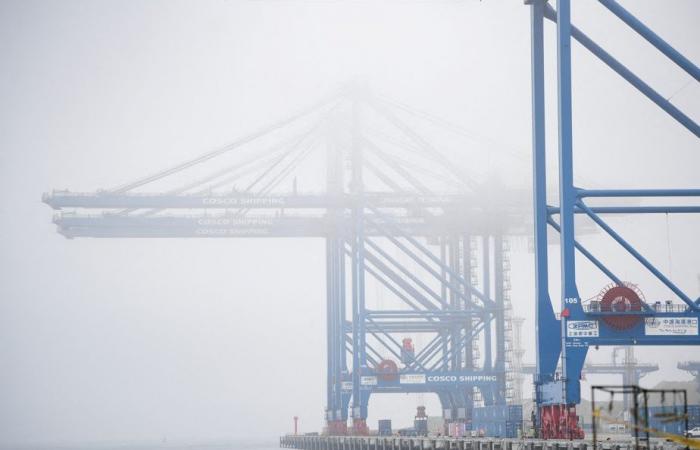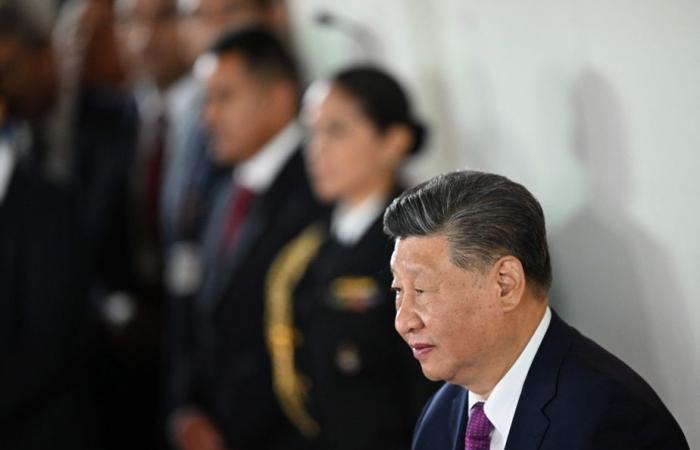(Lima) China is strengthening its presence in South America with the inauguration of a megaport in Peru, a strategic infrastructure which is part of its ambitious “New Silk Roads” program.
Published yesterday at 10:13 p.m.
Sandra FERRER
Agence France-Presse
The Chancay terminal, located approximately 80 km north of Lima, will allow the transit during its first year of operation of one million containers. It was built by Cosco Shipping Ports, 60% owner of the port and a subsidiary of Chinese shipping giant Cosco Shipping.
It was created as part of the Chinese program launched in 2013, its official name “Belt and Road”, which aims to build infrastructure and develop maritime, road and rail links between continents, particularly in countries in development.
Several South American countries (Peru, but also Argentina, Chile, Bolivia, Ecuador and Venezuela) have already joined this initiative, which constitutes a central axis of China’s strategy to increase its influence abroad.
“From Chancay to Shanghai, what we are witnessing is not only the Belt and Road initiative taking root and flourishing in Peru, but also the birth of a new land-sea corridor between the “Asia and Latin America,” Xi Jinping welcomed Thursday, inaugurating the port from Lima.
PHOTO ERNESTO BENAVIDES, AGENCE FRANCE-PRESSE
Xi Jinping
The Chinese leader had arrived a few hours earlier in the Peruvian capital, where the Asia-Pacific Economic Cooperation (APEC) summit, which brings together 21 countries accounting for 60% of world GDP, is being held until Saturday.
“We must work together to build, manage and operate the port of Chancay,” noted Xi Jinping during a ceremony at the presidential palace, adding that he wanted to “promote connectivity between South America and China”.
“Incan Trails”
“We are a reliable partner and today, with the inauguration of the Chancay megaport, we confirm it,” assured Peruvian President Dina Boluarte.
Cosco Shipping Ports has a 30-year concession for the operation of the infrastructure currently being developed and which will ultimately have an area of 141 hectares.
China is seeking to secure its supply of strategic raw materials such as copper, soy and lithium, considered crucial in the context of the ecological transition.
The Asian giant also intends to strengthen its exports to South America, a region where its influence continues to grow to the detriment of the United States, once predominant.
The port will have four quays initially and eventually 15, for a total investment of $3.5 billion.
The deep-water terminal (nearly 18 meters), construction of which began in 2021, will be able to accommodate the largest container ships in the world, behemoths capable of transporting up to 24,000 containers.
The infrastructure will reduce maritime journeys between China and Peru by around ten days, thereby reducing transport costs.
The installation “will allow China to position itself in this region of the world,” assures Oscar Vidarte, professor of international relations at the Catholic University of Peru.
Peru, but also Chile, Colombia, Ecuador and even Brazil should benefit from the installation which will allow them to no longer transit their goods to Asia through ports in Mexico and the United States.
Once fully completed, the port “will bring huge benefits to Peru and create a large number of jobs,” Xi Jinping said.
Drawing parallels between Asia and Latin America, he cited the navigators of ancient China, but also the Incas who, “braving the ordeals”, built a network of pedestrian routes in the Andes, known as of “Inca Trails”.
“Today, the port of Chancay becomes a new starting point for the Inca Trails of the new era,” he observed.







